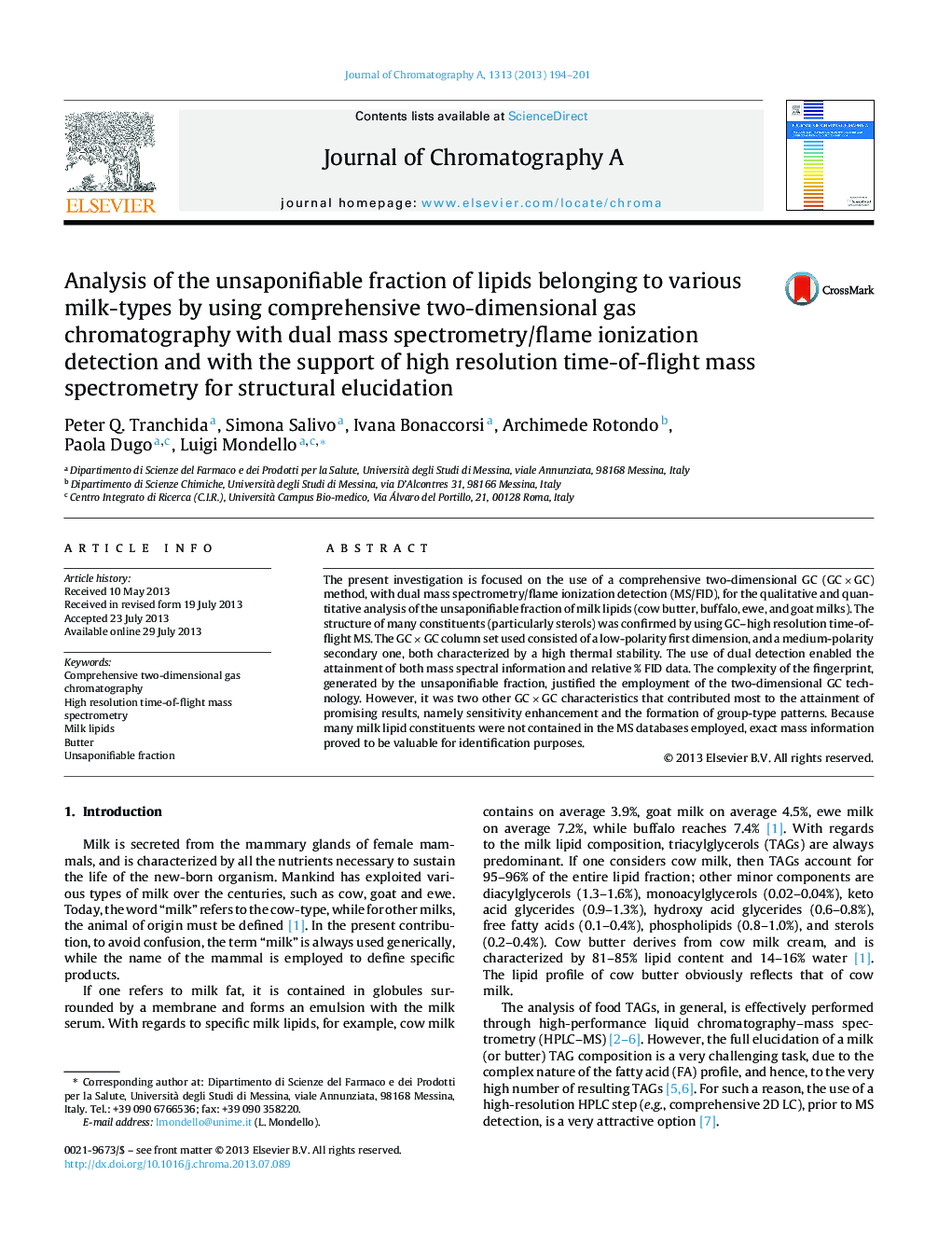| کد مقاله | کد نشریه | سال انتشار | مقاله انگلیسی | نسخه تمام متن |
|---|---|---|---|---|
| 1203416 | 1493613 | 2013 | 8 صفحه PDF | دانلود رایگان |

• GC × GC–MS/FID was used for the analysis of the unsaponifiable fraction of milk lipids.
• The structure of many constituents was confirmed by using GC–high resolution ToF MS.
• Sensitivity and group-type patterns were the GC × GC characteristics most exploited.
The present investigation is focused on the use of a comprehensive two-dimensional GC (GC × GC) method, with dual mass spectrometry/flame ionization detection (MS/FID), for the qualitative and quantitative analysis of the unsaponifiable fraction of milk lipids (cow butter, buffalo, ewe, and goat milks). The structure of many constituents (particularly sterols) was confirmed by using GC–high resolution time-of-flight MS. The GC × GC column set used consisted of a low-polarity first dimension, and a medium-polarity secondary one, both characterized by a high thermal stability. The use of dual detection enabled the attainment of both mass spectral information and relative % FID data. The complexity of the fingerprint, generated by the unsaponifiable fraction, justified the employment of the two-dimensional GC technology. However, it was two other GC × GC characteristics that contributed most to the attainment of promising results, namely sensitivity enhancement and the formation of group-type patterns. Because many milk lipid constituents were not contained in the MS databases employed, exact mass information proved to be valuable for identification purposes.
Journal: Journal of Chromatography A - Volume 1313, 25 October 2013, Pages 194–201